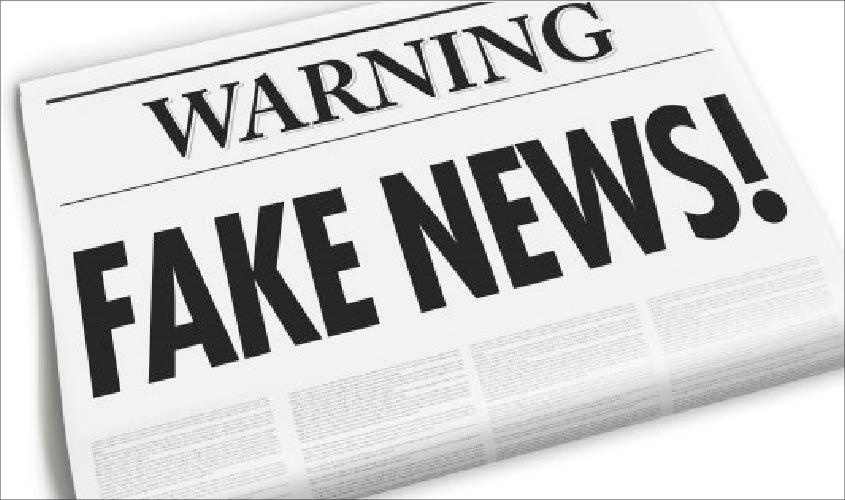The risk of disinformation contagion is growing as we are increasingly connected by social media.
LONDON: How many times did you hear the term “fake news” last week? If you’re like me, the answer is probably “too many”. Before the US elections, the word “fake” usually only applied to antiques, paintings or perhaps money. Nowadays, it seems that “fake” is used so extensively in the media that it is difficult to know what to believe. Which may be exactly the point of its protagonists.
Democracies rely on the truth, so fake news is an assault on democracy itself. “Our democracy is at risk and now is the time to act to protect our shared values and the integrity of our democratic institutions”, declared a UK Parliamentary Commission last July. No, there was no perceived imminent attack on the UK, this is just a quote from Parliament’s report on Disinformation and Fake News. Such is the prominence of “fake news” that it was declared the word of the year in 2017, the year in which it appeared so frequently in the White House, uttered by the new incumbent.
It’s easy to dismiss President Donald Trump’s assertions about “fake news”, because most sensible people know that he uses the term to rubbish any critical news that he doesn’t like, rather than bothering to refute it. He doesn’t accept or understand the lengths to which reputable newspapers go to authenticate articles they print. A London-based US reporter for the New York Times told me that his reports are fact-checked at three levels before the editor is prepared to print them. The editor of this newspaper does exactly the same, as I discovered in the past when I mistakenly put an incorrect date in a proposed article. This gives confidence to readers that considerable effort has been made to get as close as possible to the truth.
Move over to the internet and you get to the wild-west of fake news. A fascinating study carried out by BuzzFeed News concluded that in the final three months of the 2016 US presidential election campaign, 20 top-performing false election stories from hoax sites and hyper-partisan blogs generated 8,711,000 shares, reactions and comments on Facebook. Within the same period, the 20 best-performing election stories from 19 major news websites generated just 7,367,000. So “hoax” beat “genuine” hands down. Of the 20 top-performing false election stories identified in the analysis, all but three were overtly pro-Donald Trump or anti-Hilary Clinton.
Phony news pushes out real news, and those in the fake news business aim to destroy real news and create a vacuum into which they plant their big lie.
Here’s how they do it, based on the Kremlin’s playbook. First they carefully look for a vacuum or crack in target societies. Having found one, they think up the big lie to support their cause, something so outrageous that no-one will believe it’s made up. Having done this, they find a kernel of truth around which they can wrap the big lie. Experience shows that fake news is most successful when it has a small element of truth in it. The next stage is essential; the origin must be heavily concealed so that the story must seem to have come from someone else. Now, a “useful idiot” must be found in order to unwittingly push the message to a wider audience. Libel laws prevent me from identifying suitable candidates, but there are plenty of ex-members of UK Parliament available in this category. Parliaments around the world normally have a good selection of useful idiots ready and willing to push the messages. Finally, it’s always possible that the truth is uncovered, in which case they must be prepared to deny everything.
Before the fall of communism in 1991 and prior to the advance of social media, the Kremlin simply blasted out disinformation and lies on radio, which nobody listened to, and in obscure newspapers which nobody read. Under President Vladimir Putin the process of disinformation has become more subtle, but in many ways he is pushing at an open door. Around the world, particularly in the US, large swathes of the public don’t want news in the traditional sense, they want vindications of their preconceptions and prejudices. Fake news is a lazy person’s news, providing passive entertainment and demanding nothing of its recipients.
Is there a simple vaccine for the disinformation or fake news virus? Probably not, but the first step must to be expose it. Some countries are actively attempting to monitor and identify fake news. In Estonia, there’s a monitoring robot called Propamon, designed to look for any news in the Russian media related to Estonia. The Lithuanians have developed a “myth debunking” Artificial Intelligence (AI) initiative to do the same. In Ukraine, another former member of the Soviet Union, a university professor and his students have developed StopFake, a resource designed to learn about Russian disinformation. The Atlantic Council’s Digital Forensic Research laboratory is using its own AI program, MythDetector, to track and debunk anti-western disinformation.
While these initiatives are welcome, the risk of disinformation contagion is growing as we are increasingly connected by social media. Fake news appears to be becoming a global pandemic, a worldwide war on truth. The Code of Practice on Disinformation, signed recently by such online giants as Facebook, Twitter, Mozilla and Google, is a major move forward in self-regulatory standards. The solution, however, can only come from every country increasing public awareness to strengthen collective defence against the real and present danger to democracy itself.
John Dobson worked in UK Prime Minister John Major’s Office between 1995 and 1998 and is presently Chairman of the Plymouth University of the Third Age.

